Похожие презентации:
Total Productivity Management (TPM), TQM, and Hoshin Kanri
1. 3.1 Total Productivity Management (TPM), TQM, and Hoshin Kanri
• THREE TYPES OF PROBLEMS• TOTAL PRODUCTIVITY MANAGEMENT, TPM
(Sumanth, David, J. 1998. CRC Press LLC. 373 p.)
• HOSHIN KANRI
• HOSHIN PLANNING
• ITIL
• Case Honeywell
JAP
1
2.
What does business growth require?A balanced
situation – no
changes in
revenues (nor
profits)
JAP
2
3.
What does business growth require?A steady yearly
growth by small
steps improvement
and investments
based on yearly
profits
JAP
3
4.
What does business growth require?Or giant tiger leap
by investment – by
new own capital or
loaned capital
=> High risks and
opportunities
JAP
4
5.
Define processesand create metrics
Stabilize
Analyze and
improve
processes and
performance
continuously
JAP
Strategy
planning RISK
management
5
6.
Where do younormally find the
biggest quality
problem?
JAP
6
7.
How does TQM solve the businessproblems?
Describe the framework of TQM!
JAP
7
8.
TQMcompetitiveness
Customer satisfaction
external and internal
Profitability and
continuity
Continuous improvement of
processes
Society and
environment
restrictions
know-how, skills
and motivation
JAP
Common
goal
means
interaction
8
9.
‘s TQM /MODEL
JAP
9
10.
MODELJAP
10
11.
JAP11
12.
Unique Features of TOTAL PRODUCTIVITYMANAGEMENT, TPM, Employee Creativity
PROMOTION 3,0%
OTHER
23,5%
MONEY
21,0%
RECOGNITION 52,5%
FIGURE 1. Importance of recognition and money in fostering creativity. (Source: "Productivity and Quality: IIE
Evaluates Improvement by Productivity Engineers,“ Industrial Engineering, p. 57, May 1989)
JAP
12
13.
This is merely one example of what has been proven by manybehavioural scientists - that a recognized and motivated group of
individuals provide a positive performance environment for
themselves and for the enterprise for which they work. A special
report published by the Institute of Industrial Engineers showed
that recognition and money accounted for 73.5% of the responses
offering ideas to improve performance (Figure 1).
Matsushita, generally considered the largest consumer electronics
company in the world, knows the importance of people.
"Matsushita's Seven Objectives" (Figure 2), as the company calls
them, all revolve around people. No wonder it has been such a
successful company.
JAP
13
14.
"MATSUSHITA'S SEVEN OBJECTIVES”1. NATIONAL SERVICE THROUGH INDUSTRY
Our purpose shall be not solely to gain wealth nor display
industrial strength, but to contribute to the progress and welfare of
the community and nation.
2. FAIRNESS
We shall be fair and just in all our business and individual
dealings. Without this spirit no man can win respect nor can he
respect himself no matter how wise or capable he may be.
FIGURE 2. People at the centre of attention in
Matsushita. (Courtesy of Matsushita Corporation.)
JAP
14
15.
3. HARMONY AND COOPERATIONAlone we are weak, together we are strong. We shall work
together as a family in mutual trust and responsibility. An
association of talented men is but an unruly mob unless each
member is imbued with this spirit.
4. STRUGGLE FOR BETTERMENT
It shall be our policy to encourage trust and self-reliance that
each may gain self-respect through his own endeavour and to
struggle hard for betterment. Without this spirit, true peace and
progress cannot be achieved.
FIGURE 2. People at the centre of attention in Matsushita. (Courtesy of
Matsushita Corporation.)
JAP
15
16.
5. COURTESIES AND HUMILITYWe shall respect the rights of others. We shall be cordial and
modest. We shall praise and encourage freely. Without this spirit
there is no social order.
6. ADJUSTMENTS AND ASSIMILATION
Progress cannot be achieved unless we adjust to the everchanging conditions around us. As the world moves forward, we
must keep in step.
FIGURE 2. People at the centre of attention in
Matsushita. (Courtesy of Matsushita Corporation.)
JAP
16
17.
7. GRATITUDEWe shall repay the kindness of our associates, our community,
our nation and our foreign friends with gratitude. This spirit of
gratitude will give us peace, joy and unlimited strength to
overcome all difficulties.
FIGURE 2. People at the centre of attention in
Matsushita. (Courtesy of Matsushita Corporation.)
JAP
17
18.
In summary, managers who design their companies around the"people building" theme will be more successful than those who
design with any other central focus, such as profits or technology.
The TPM philosophy creates and sustains the people-building
emphasis; therefore, the power of technologies designed by such
people is long lasting and totally productive. The people building
thinking in TPM ensures an enthusiastic work ethic, job security,
organizational stability, and employee stability.
Instituting innovations and creating technological or structural
changes in such an environment are easier because of the
"organizational resilience" for adaptability and accommodation.
JAP
18
19.
Quality at Nokia Networks What does quality mean atNokia Networks - See more at:
http://networks.nokia.com/aboutus/company/quality#sthash.Kdtt5arZ.dpuf
http://networks.nokia.com/about
-us/company/quality
JAP
19
20.
JAP20
21.
Hoshin means objectives or directionsa course, a policy, a plan, an aim)
(
Kanri means control or management
(administration, management, control, charge
of, care for)
Hoshin Kanri means policy management or
management of objectives (Policy
Deployment)
JAP
21
22.
Nichijo means daily.Nichojo
Kanri means daily
management
Hoshin Kanri was developed in Japan
1960 at Bridgestone Tire Company. the
philosophy originates with ancient military
traditions and efficiency.
JAP
22
23.
The purpose of Hoshin Kanri is to make itpossible to get away from the status quo and
make a major performance improvement by
analyzing current problems and deploying
strategies that respond to environmental
conditions.
There are two levels:
Strategic Planning Strategies — Business
Simulations
–The Daily Management Strategies — Business
Operations
–The
JAP
23
24.
Hoshin planning process - flowchartCompany vision
Long range plan Customer inputs
Competitive
Situation
Previous year’s
plans
Review these fundamental viewpoints of strategic planning
Company
President’s
Plan
Division
Manager’s
Plan
Next level
Manager’s
Plan
Annual
plans
Department
Manager’s
Plan
Daily Management
plans
Planning phase
Do
Check
Act
JAP
24
25.
TOP-DOWN vs. BOTTOM – UP vs. HOSHINKANRI PLANNING
Top management’s
financial goals
Middle management’s
operative plan and to
achieve financial goals
Employees’ operative
goals
JAP
25
26.
BOTTOM – UP PLANNINGTop management’s
financial goals
Middle management’s
operative plan and
goals
Very high commitment –
inevitable in creative and
scientific jobs!
Employees’ operative
goals and plan
JAP
26
27.
COOPERATIVE PLANNINGMIKÄ ON MAHDOLLISTA
– ja mitä se vaatii
panostuksia
-> TAVOITTEIDEN
UUDELLEENARVIOINTI
JOHTOManagement
KESKIJOHTO
Middle
management
TYÖNTEKIJÄT
TALOUDELLISET
TAVOITTEET
Realistinen
tavoite ja
parempi
mieli
Yhtyeensovittaminen
Toiminnalliset
mahdollisuudet
TOP DOWN –
BOTTOM UP
JOHTAMINEN
MIKÄ ON
VÄLTTÄMÄTÖNTÄ
Menestymiselle/
olemassaololle
Tavoitteista ja
keinoista yhteisesti
JAP
sopimista
Sitoutuminen
tavoitteisiin ja
keinoihin
27
28.
Balanced Scorecard , BSC – a StrategicPerformance Measurement Framework
(Kaplan & Norton 1996)
http://www.yout
ube.com/watch
?v=_A02vKgE4
NQ
Financial Perspective
Goal - Measure
Customer Perspective
Goal - Measure
MBO VS. HOSHIN
KANRI PLANNING
VS. BALANCED
SCORECARD
Vision and Strategy
Process Perspective
Goal - Measure
Learning and Growth Perspective
Goal - Measure
JAP
28
29.
ITIL, formerly known as the Information TechnologyInfrastructure Library, is a set of practices for IT service
management (ITSM) that focuses on aligning IT services
with the needs of business. In its current form (known as
ITIL 2011 edition), ITIL is published as a series of five
core volumes, each of which covers a different ITSM
lifecycle stage. Although ITIL underpins ISO/IEC 20000
(previously BS15000), the International Service
Management Standard for IT service management, the
two frameworks do have some differences
JAP
29
30.
ITIL describes processes, procedures, tasks, andchecklists which are not organization-specific, but
can be applied by an organization for establishing
integration with the organization's strategy,
delivering value, and maintaining a minimum level
of competency. It allows the organization to
establish a baseline from which it can plan,
implement, and measure. It is used to demonstrate
compliance and to measure improvement
JAP
30
31.
JAP31
32.
JAP32
33.
JAP33
34.
Summary of TQM – Total Quality ManagementComparison with Balanced Score Gard - BSC
Financial perspective
Profitability and
continuity
Customers
Product and
service
quality
VISION and
Strategy
Processes
Robust and
productive
Quality management of People
Competent and motivated –
JAP
34
35.
ADDSocial responsibility
and Sustainable development
ADD
Continuous improvement Struggle for betterment
JAP
35
36.
JAP36
37.
JAP37














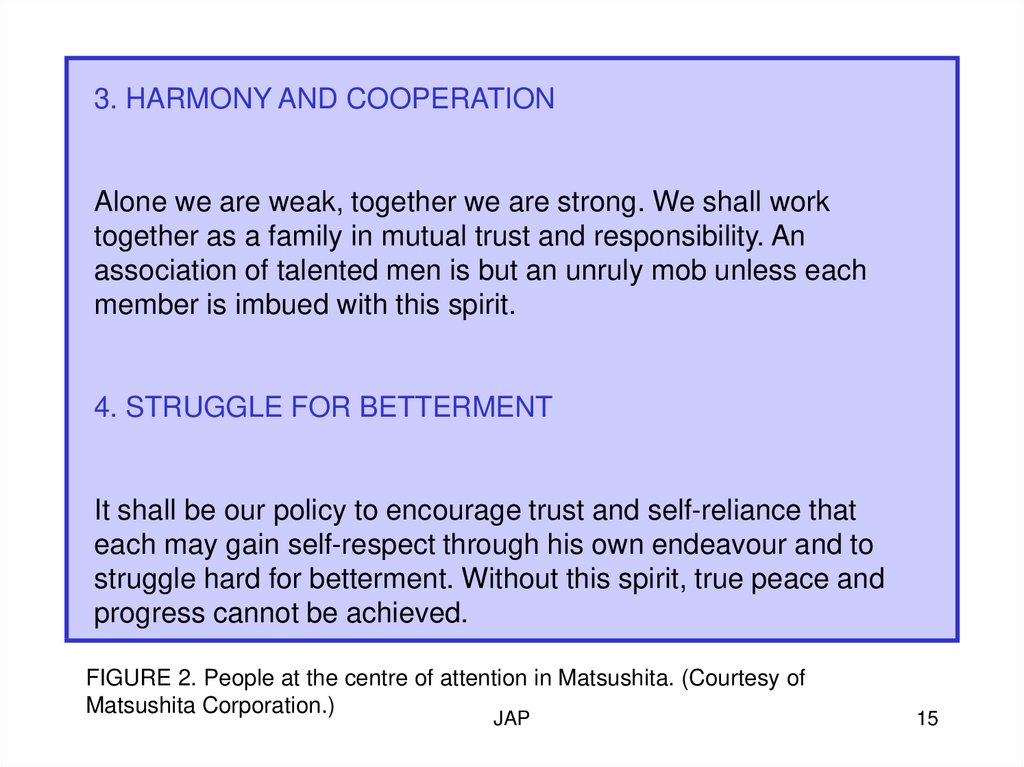







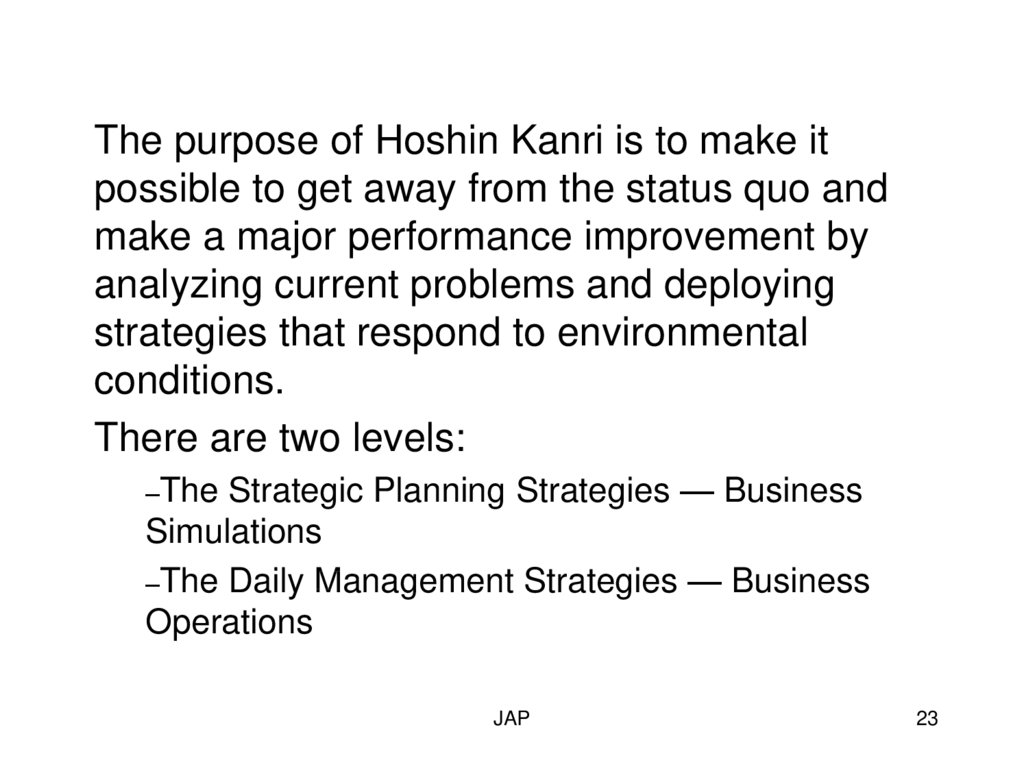




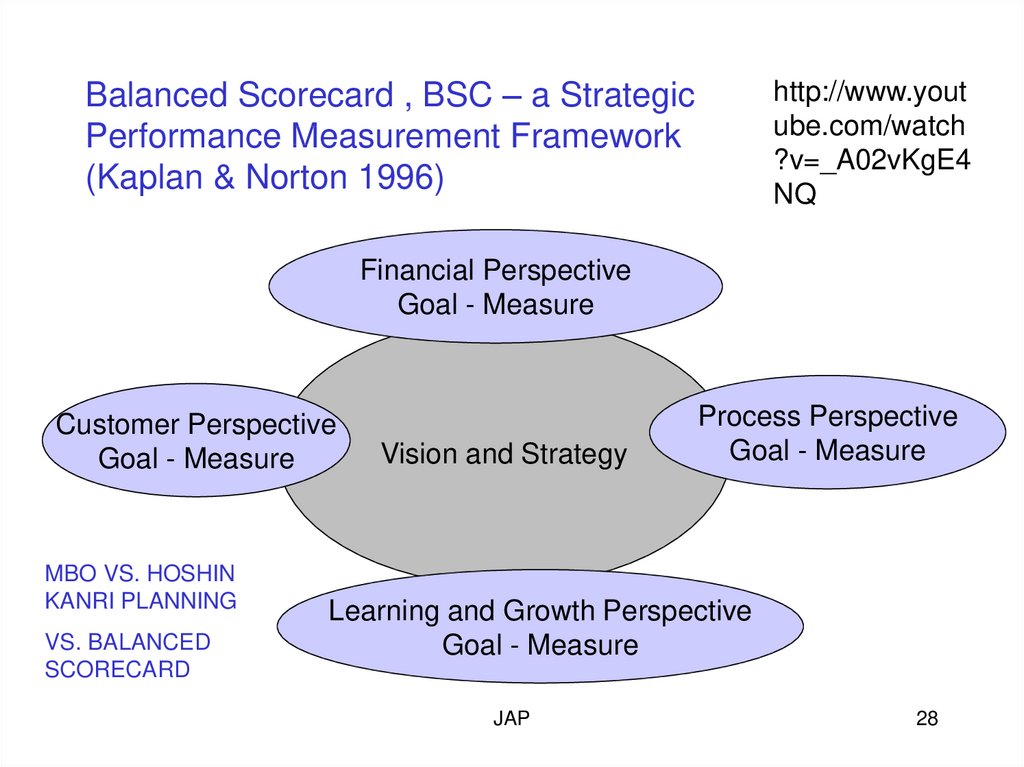



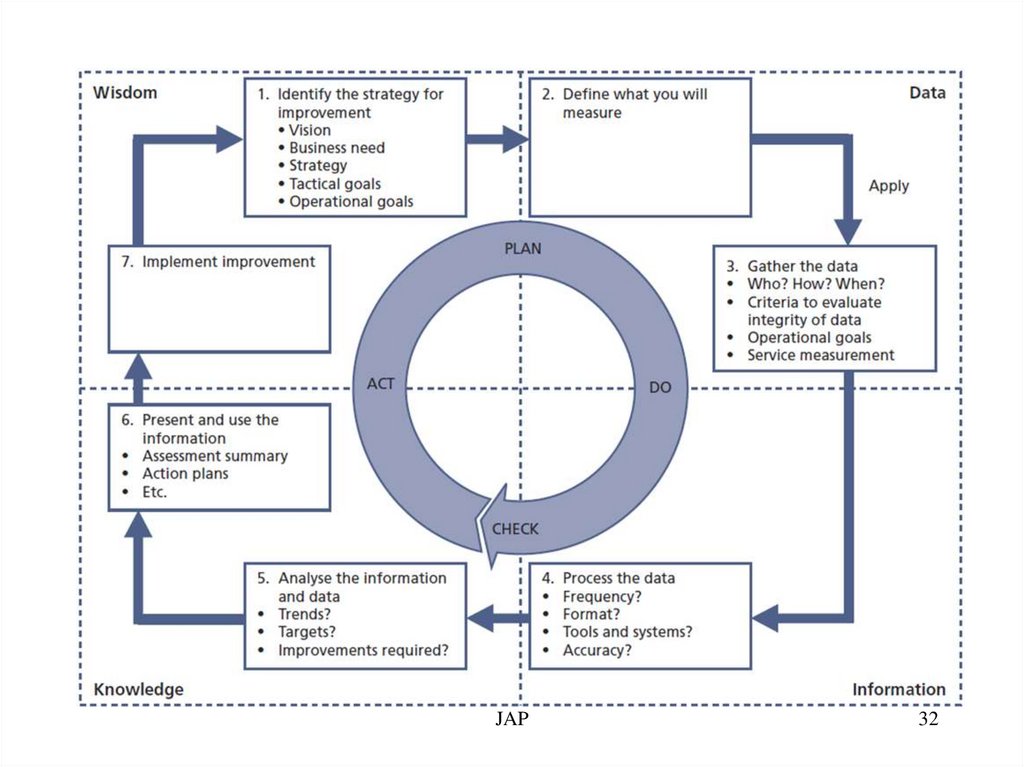
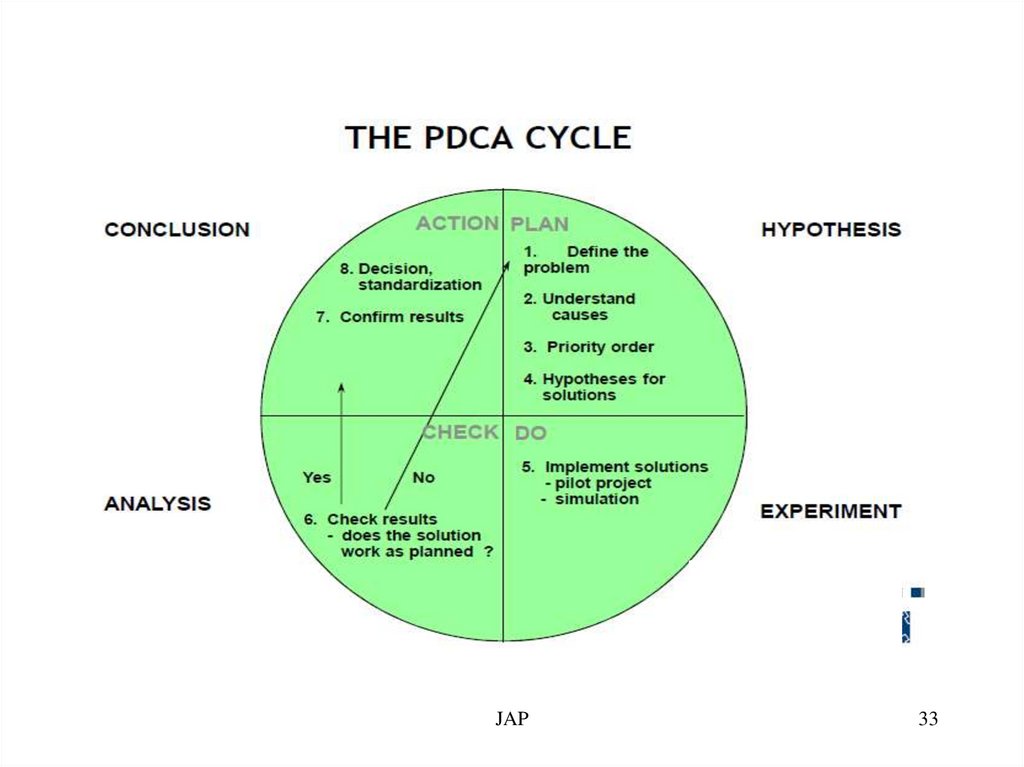
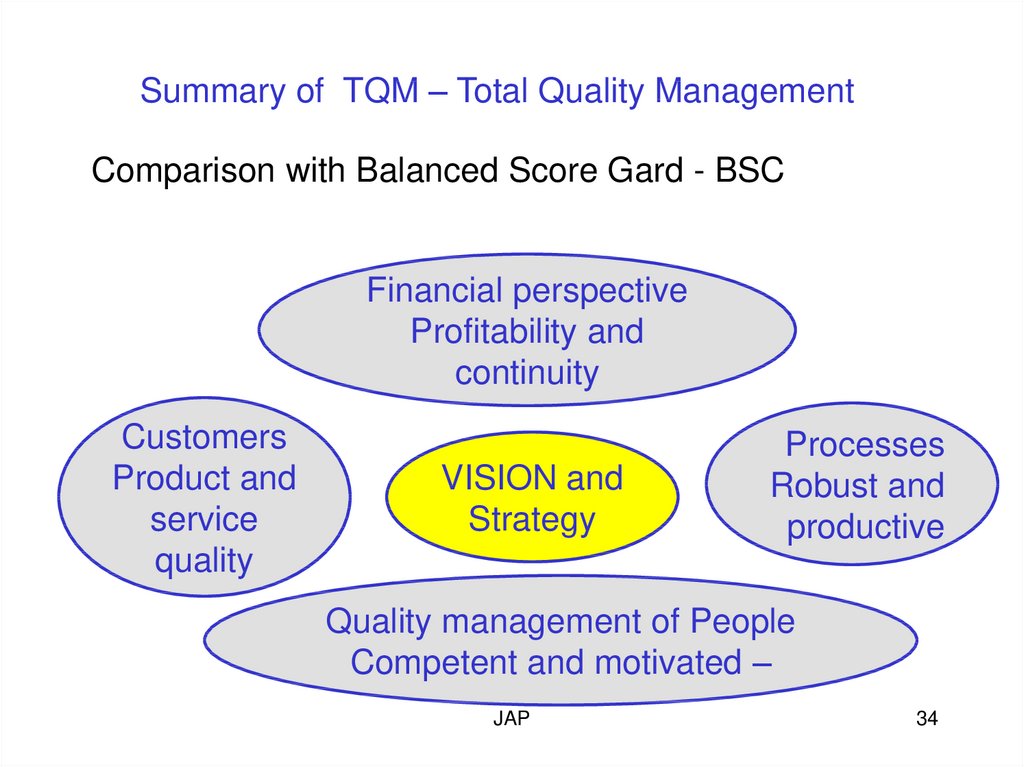

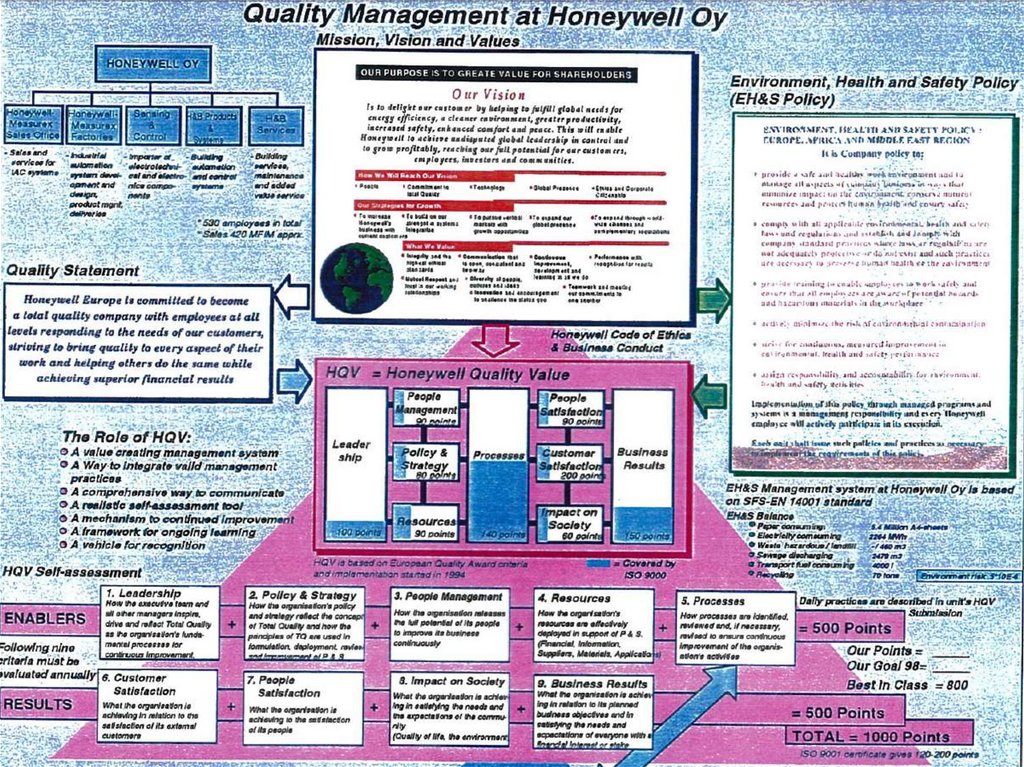
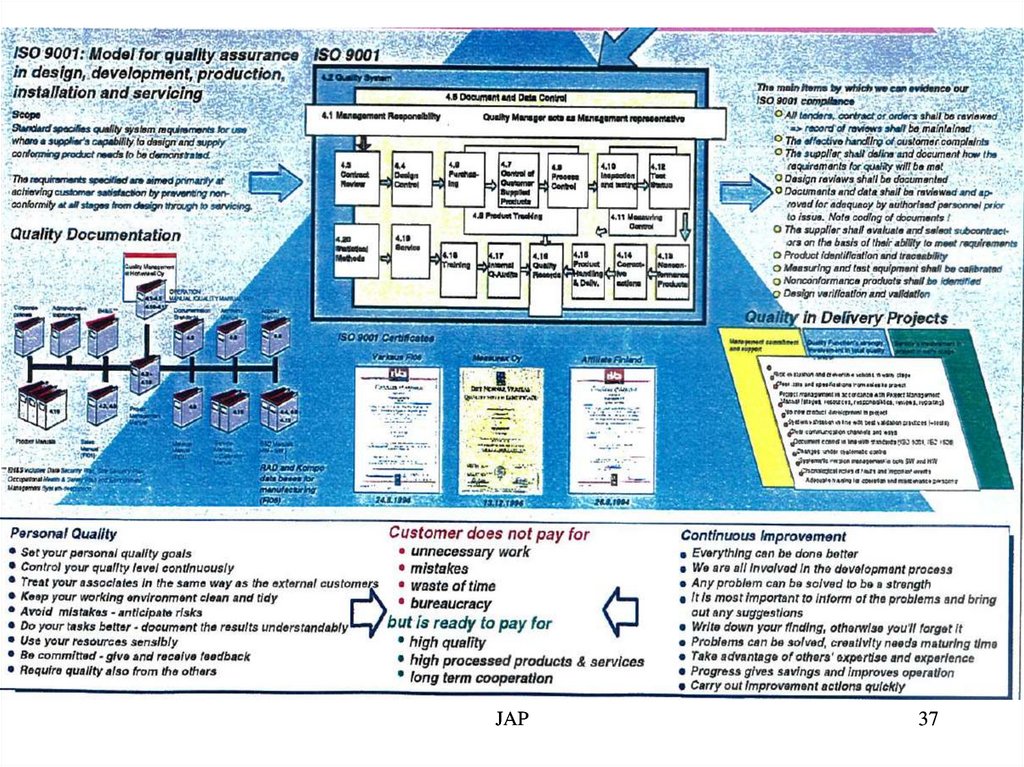
 Менеджмент
Менеджмент








